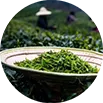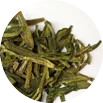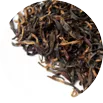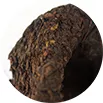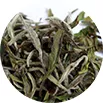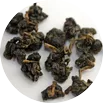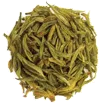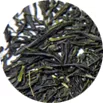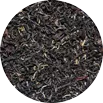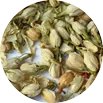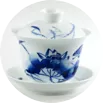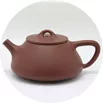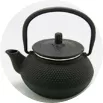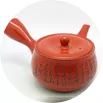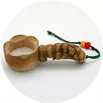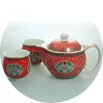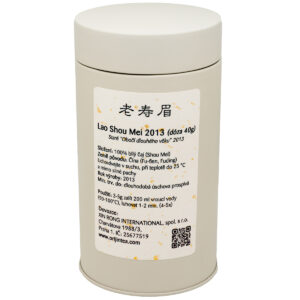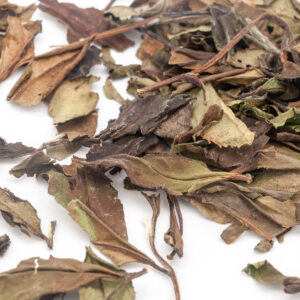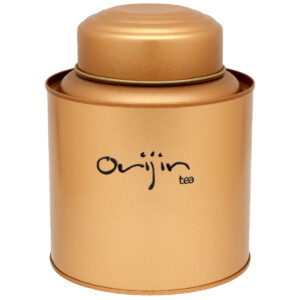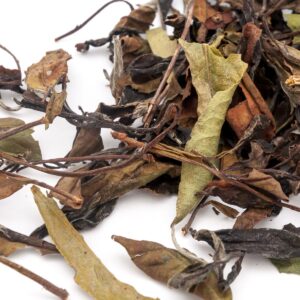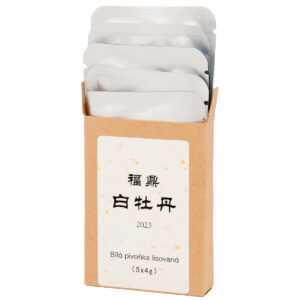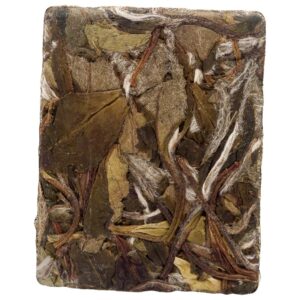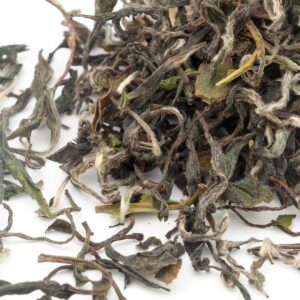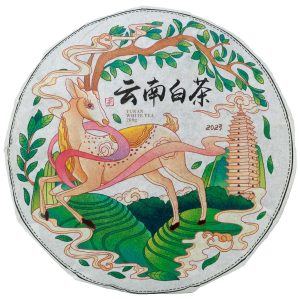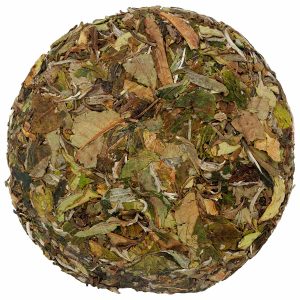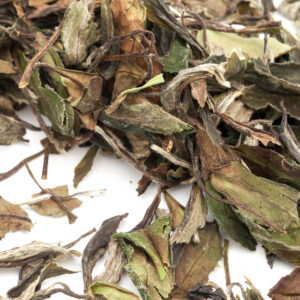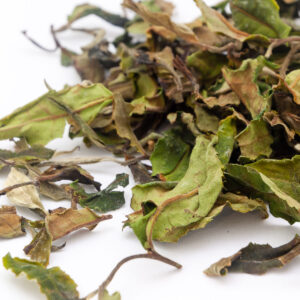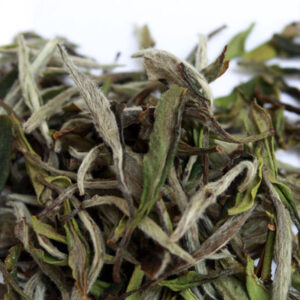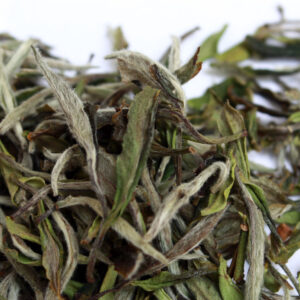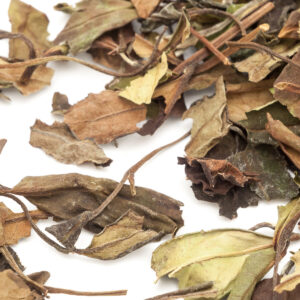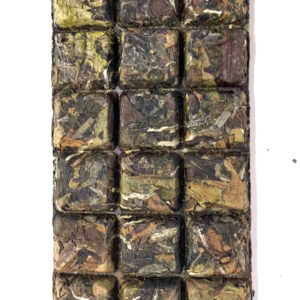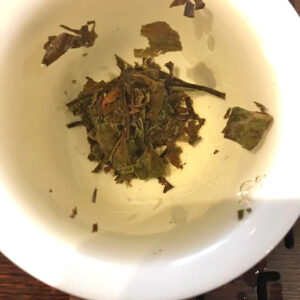Shou Mei 2013 40g
Wu Yi Bai Cha Ye Sheng 2023 Orijin Tea
Bai Mu Dan Xiao Fang
Bai Xue Long
Bai Mu Dan King
Yunnan Bai Mu Dan
Bai Mu Dan Ji Pin
Shou Mei
Gong Mei 2018 pressed 100g
White Tea – 白茶 [báichá]
White teas are fresh, sweet and subtle teas with pure aroma. It is the most natural form of a tea leaf. Harvested leaves are sun-wilted, ten dried and finally sorted. Slight natural oxidation may occur during the wilting process. The quality of white tea is primarily due to harvest, which is very delicate and has strict rules. Regrding “white” in the name of the tea, it does not refer either to the colour of the leaf nor the infusion. As a matter of fact, it is an inacurate translation of character “Bai 白”, which also means “unprocessed” or “natural”. As white tea (unlike green tea) does not undergo the process of fixation “shaqing 杀青” (also known as “pan-frying” or “kill green”), that stops the fermentation process. Therefore, the tea keeps on aging naturally. Traditionally, the aging process of the white tea resembless the process of aging of sheng (green) pu`er. Meanwhile, recently a modern speedy process of aging has been developed. From this perspective, we can devide the white teas into two kinds: traditional (fermented naturally) and modern aged ones (produced by speedy fermentation). Both kinds undergo similar process, with a few differences.
Manufacturing process:
Plucking: Both aged and traditional white teas are made from the same tea plant, but aged white tea is typically made from the larger, more mature leaves of the plant, while traditional white tea is made from younger, smaller leaves.
Withering: The withering process is the same for both aged and traditional white teas, when the leaves are spread out in the sun or in a well-ventilated area to wither and lose moisture.
Sun-drying: After withering, white tea leaves are sun-dried. Sun-drying is a traditional method, which helps to preserve the natural flavor and aroma of the tea leaves.
Fermentation: The fermentation process for aged white tea is longer and more intensive than for traditional white tea. Traditional fermentation of non-aged white tea is under sun, modern process is done inside.There are two primary ways to make aged white tea:
Aged white tea (processed by accelerated fermentation): The tea leaves are intentionally fermented for an extended period of time in controlled conditions, such as in a warm and humid environment. This method can result in a more consistent and reliable aged white tea, with a flavor profile that is more closely controlled by the manufacturer.
Traditional (natural) aging: The tea leaves are stored in a cool and dry environment, typically for several years or more. During this time, the tea leaves undergo natural fermentation and oxidization, resulting in a unique and complex flavor profile. This method can result in a more balanced and complex aged white tea, with a flavor profile that reflects the specific storage conditions and natural fermentation process.
Both methods can result in high-quality aged white tea, but the specific method used can impact the flavor profile and overall quality of the tea. Additionally, not all white teas are suitable for aging, and the storage conditions can also impact the quality of the aged white tea. It’s important to carefully consider the specific type of white tea being used and the desired flavor profile when selecting a method for aging.
The most frequently used cultivars:
Fuding White Tea (China Tea No.1):
A cultivar with a history of more than 140 years, originating in Fuding County, Fujian Province, it belongs to the excellent type with strong tips, rich white fluff, and has a high proportion of nutrients. It is also suitable for the production of red and green teas.
Fuding Da Bai Hao (China Tea No.2):
The best and highest quality white tea cultivar with more than 120 years of history. Originally from Wenxi Village in Fuding County, Fujian Province. From 1956, the production of white tea began to increase and expand. It is currently grown across Fujian province in places where green and red teas were originally produced. White teas later began to be grown in other provinces – Jiangsu, Zhejiang, Anhui, Hubei, Jianxi, Guangxi.
Fuding Da Bai Hao is rich in polyphenols, contains nitrates and has strong large tips with rich white fluff, which qualifies it as an ideal specialty cultivar for white tea production. Bai Hao Yin Zhen was awarded as ‘National Tea’ in 1982, 1986 and 1990.
Differences between white teas on the market:
Some types of white tea that can be found on the market today are only so-called “white teas”, when it is not true white tea from Fuding (or tea from the relevant cultivars from other provinces), but specially produced green tea processed with a larger proportion of tips. These teas can be distinguished by a certain ‘greenness’ of the tips used, as true white tea is always pure silver-white in color.
Health benefits:
White tea is appreciated for its health benefits.
Antioxidant Properties: White tea contains high levels of antioxidants, which are beneficial compounds that help to protect body against free radicals, which can damage cells and contribute to chronic diseases such as cancer or heart disease. The antioxidants in white tea may also help to slow down the aging process and improve skin health.
Immune system support: White tea contains several compounds that may help to boost immune system, including catechins, flavonoids, and polyphenols. These compounds can boost immunity, prevent infections, or reduce inflammation. Blood sugar control: due to the ability to lower the blood sugar level, white tea is a very suitable daily drink for prevention of diabetes, as well as a drink for diabetes patients.
White tea has several benefits for cardiovascular system, e.i. positive stimulation of the heart, lowering blood pressure, or prevention agains cardiovascular diseases. The flavonoids in white tea may help to reduce inflammation in the arteries and improve blood flow, while the antioxidants can help to protect against the oxidation of LDL cholesterol, which is a risk factor for heart disease.
Cancer Prevention: Regular drinking of white tea may prevent the growth and spread of cancer cells in the body. The antioxidants in white tea may help to protect against DNA damage, which can lead to the development of cancer cells.
Weight Loss: Some studies have suggested that white tea may help to promote weight loss and improve metabolic health. The caffeine in white tea can help to boost metabolism and increase fat burning, while the catechins and polyphenols may help to reduce inflammation and improve insulin sensitivity.
Oral Health: White tea has also been shown to have benefits for oral health, including reducing the risk of cavities and gum disease. The polyphenols in white tea may help to inhibit the growth of bacteria in the mouth and reduce inflammation, while the fluoride content can help to strengthen tooth enamel and prevent decay.
Overall, Chinese white tea is a healthy beverage that offers a range of health benefits, from supporting immune system function to promoting heart health and preventing cancer. Incorporating white tea into your diet can be a simple and delicious way to improve your health and wellbeing.
History:
White tea rangs among the most internationally popular Chinese tea. It is believed to originate in Fuding County of Fujian province in southern China. According to legend, white tea was first discovered during the Tang Dynasty (618-907) by a young girl who saw the white hairs of tea buds glittening on the sunlight. Intrigued by their beauty, she plucked the buds and took them home to her mother, who brewed them into tea. The resulting beverage was delicate and refreshing, and soon became popular among the local population.
During the Song Dynasty (960-1279), white tea gained popularity throughout China, and was recognized for its unique flavor and health benefits. The tea was traditionally made from the buds and young leaves of the tea plant, and was sun-dried or steamed to prevent oxidation. Because of its delicate flavor and limited production, white tea was initially only enjoyed by the wealthy elite.
In the Ming Dynasty (1368-1644), white tea began to be produced on a larger scale, and its popularity spread beyond the upper classes. White tea was also exported to Europe during this time, where it was highly prized for its delicate flavor and aroma.
During the Qing Dynasty (1644-1912), white tea continued to be produced in large quantities, and new techniques were developed for processing and brewing the tea. One of the most famous white teas of this period was the Bai Hao Yinzhen (Silver Needles) tea, which is made from only the buds of the tea plant and is considered one of the finest white teas in the world.
Modern era: In the 20th century, white tea production declined due to various factors, including changing consumer tastes, the rise of other tea varieties, and political upheavals in China. However, in recent years, white tea has experienced a resurgence in popularity both in China and around the world, thanks to its unique flavor, health benefits, and growing awareness of its history and cultural significance.
Today, white tea is produced in several regions of China, including Fuding, Zhenghe, and Yunnan, and is enjoyed by tea enthusiasts around the world. Its delicate flavor, floral aroma, and numerous health benefits continue to make it one of the most popular and sought-after teas in the world.


